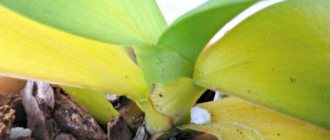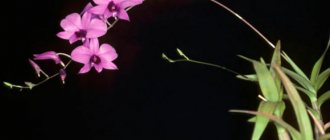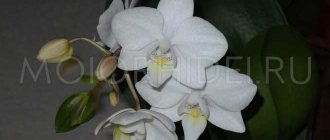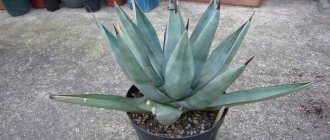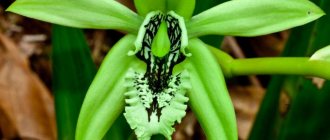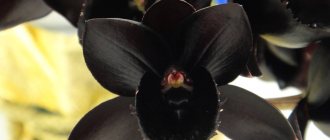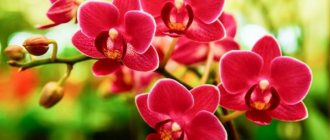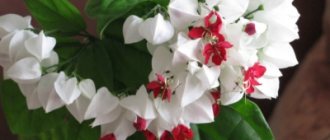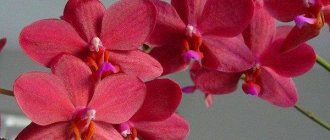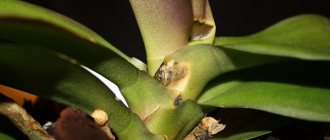Phalaenopsis orchid can be grown at home. This flower will blend harmoniously with any indoor decor. To date, geneticists have bred a large number of phalaenopsis species. The color of the flowers of a plant can be very different, so you can always choose a phalaenopsis to suit your taste for your interior. After all, it is not enough for every person to have an orchid of a classic color.
It is common among gardeners to collect not only attractive but also rare plants. And phalaenopsis is quite capable of taking a place in their collection because of its unusual blue color.
Special varieties
Blue archidea - dyed or natural? There are only two varieties of orchids with an unusual blue color - Vanda and Cattleya. Vanda is a capricious flower and requires special attention. The color is not quite blue - with a purple tint. But Wanda looks no less impressive than painted flowers.
Cattleya is less demanding in care. Features large, bright flowers. The colors are different, and among them there are also varieties with pale blue flowers. Orchids do not have a deep blue color in nature. Flowers are colored by watering or injection with dye. It will not be possible to preserve the blue color - the next flowers will be slightly bluish or completely white.
All the intense blue orchids in the store are painted phalaenopsis. When purchasing a plant, inspect it carefully. If the flower is limp, a bluish tint appears on the roots and leaves, and there is noticeable damage on the stem from the introduction of dye, do not buy it. Such a plant will die very soon.
Why is the orchid blue?
It is important to note that manufacturers openly say that the blue color is the result of dyeing using a secret patented technology. Therefore, the next bloom will be white. According to the manufacturers, the orchid is placed in a special environment made from elements of natural origin and it remains unharmed.
Interesting materials:
Why is it useful to plan your day? Why is it beneficial to sleep on a silk pillow? Why is it useful to sleep on hard? Why was Albus Dumbledore changed? Why are tomatoes wadded? Why tomatoes? Why did Anita Tsoi gain weight? Why did the saffron milk caps turn blue? Why is the last one and not the last one? Why was a monument to Zhukov erected?
Actions after purchase
Care is complicated by the weakened state of the plant. The introduction of artificial dye is a powerful stress for the flower. He will need increased attention and enhanced care so that he can adapt to new conditions.
Do not rush to replant the orchid in a new pot. This is additional stress. There is too high a chance that the flower will die soon after transplantation.
If too many chemical dyes have been introduced, the flower will gradually begin to shed its buds. He needs to be resuscitated urgently. Carefully inspect the plant from peduncle to roots. Look for needle marks. Finding them on the roots is a bad sign. There are no guarantees that the orchid will be saved. The dye was injected into the peduncle - the plant has a greater chance of survival.
Resuscitation of a painted flower
- Find the injection site. And carefully, with a sharp knife, cut off the paint-filled peduncle.
- Remove the orchid from the pot. Free the roots from the substrate. Rinse the root system with warm water.
- Inspect the roots. If you find bluish, rotting areas, cut them out. Treat the cut areas with cinnamon or charcoal powder.
- Dry the roots. During few hours.
- Replant. Into a new sterile substrate.
Are there really no blue phalaenopsis in nature?
There is no such bright blue color as painted ones. There are pale blue, blue with a lilac tint, pink-blue, white with a gray-blue tint. Such shades are very rare for phalaenopsis. These are mainly species plants with small flowers and primary hybrids based on them.
For example, natural blue forms:
- Phalaenopsis violacea coerulea (photo 10)
- Doritis pulcherrima coerulea (photo 11)
- Phalaenopsis equestris cyanochilus
And some famous hybrids:
- Doritaenopsis Peter "Blue Sky" (photo 12)
- Doritaenopsis Purple Martin "KS" (photo 13)
- Doritaenopsis Kenneth Schubert “Blue Angel” (photo 14)
- Doritaenopsis Siam Treasure “Blue” (photo 15)
Although these orchids have small flowers, the shades are the most natural, without coloring.
Now you know everything about blue phalaenopsis. Decide for yourself which one will become your pet.
Orchids are considered one of the most beautiful flowers on Earth and are popular among gardeners in all countries. This is not surprising: the bizarre shape of the petals, size and relatively rapid growth sets them apart from thousands of other plants. But the most unusual among them is, of course, the blue or blue orchid.
A number of sources claim that blue orchids do not exist in nature
. This myth arose due to the huge mass of fakes. Unscrupulous sellers simply paint the corollas of flowers using special pigments, and then pass them off as a blue wonder. So the flower will begin to turn blue and become a “blue” orchid.
Painted phalaenopsis is determined by pigment residues on other parts of the flower
Royal phalaenopsis - plants from the Orchid family, native to Southeast Asia, with white, purple or pale pink flowers - are subject to similar manipulations.
To recognize "painted phalaenopsis", look at other parts of the plant
: They leave traces of blue pigment on them, so don't buy a fake one.
Only in 2011 did true blue phalaenopsis appear - Phalaenopsis Royal Blue, which are grown in Florida and Holland. The Dutch company Geest Orchideeën has grown several varieties of phalaenopsis in different shades of blue.
, with purple and even green shades.
Basic care
A painted flower will require more careful care. Breaking the rules will result in death.
- Lighting. Sunny places are not suitable. On the south side they place it on a table slightly away from the window. Preference is given to the northeast, west and east sides. During the midday hours, be sure to provide shade.
- Temperature. In light shade, at moderate temperatures of 18-25˚C, flowering will last longer. In summer, a short-term increase in temperature up to 35˚C is allowed. Prolonged heat leads to shedding of buds and lethargy of leaves. A plant weakened by dyes may not tolerate heat. In winter, the temperature is reduced to 15-25˚C. Withstands short-term cooling down to 12˚С.
- Humidity. A normal humidity level is considered to be in the range of 30-40%. High humidity and poor ventilation of the room lead to rotting of the roots and the appearance of spots on the leaves. When the humidity is below 20-25%, the leaves lose turgor and the flowers fall off. Careful spraying is beneficial. But try not to allow water to accumulate in the leaf axils.
- Watering. You need to water according to the actual variety of the plant. White phalaenopsis are most often colored, so watering should be regular. Do not allow the soil to dry out completely, but also not allow it to become waterlogged. In phalaenopsis, wet roots become green in color.
- Feeding. It is better not to feed a painted orchid or use a minimal amount of low concentration fertilizer. One of the most successful fertilizers is Kemira Lux.
- Root care. Aerial roots are not buried in the substrate. They are needed to obtain additional moisture and nutrition from the air. Old roots gradually die off - they turn brown and dry out. The dried parts are carefully cut off with a sharp knife.
- Priming. The main substrate component for most orchids is pine bark. In dry rooms, sphagnum is added to the substrate - it retains moisture well. You can add some crushed foam and charcoal. Before planting, the bark is soaked for two days, washed with clean water and only then mixed with the rest of the ingredients.
- Transfer. Don't rush into transferring. It is worth doing this if the roots are damaged or the substrate is in poor condition. Replant after flowering at intervals of two to three years.
Don't be surprised if your blue orchid changes color during its next bloom. The paint is gradually washed out of the plant. Freshly colored flowers are intensely blue; during the next flowering they will be white with blue streaks or slightly bluish. Then ordinary white flowers form on the peduncles.
What's behind the color?
Often, the happy owners of orchids with blue or light blue flowers are surprised to discover that the next time they bloom, the buds no longer become a bright, saturated color, but dirty blue, or even completely white. This is due to the fact that the plants are colored using a chemical dye.
. Many stores do not hide this and place appropriate warnings on color labels. But this information is not actively disseminated among buyers, so often owners of dyed flowers are subsequently left disappointed.
Flowers are most often painted white, since they are easiest to achieve uniform coloring. Over time, the dye washes out and they return to their original color.
Coloring at home
Why did the blue orchid become a different color, can it be repainted? It is not advisable to paint orchids, since any coloring substance poisons them. As a last resort, use special paints for flowers. They can be purchased at large flower shops or ordered online. The algorithm of actions includes four stages.
- Dilute the paint with water. In accordance with the instructions.
- Take a sterile syringe. And fill it with dye.
- Gently pierce the flower stalk. And introduce the dye solution.
- Treat the puncture site. Coal powder.
At first, carefully monitor the condition of the plant. Keep it in a cool room, in moderate lighting, and monitor the condition of the soil. If the flowers turn blue, do not wilt, and the plant looks healthy, the experiment was a success.
It is not recommended to inject the dye solution into the stem and roots of the plant. The orchid may die from this. Use only special dyes for flowers. Food inks will not give the desired effect; ink will destroy the orchid.
Japanese miracle
In 2013, Japanese breeders presented the result of their many years of work - a transgenic blue orchid. Scientists took as a basis the white phalaenopsis Aphrodite, which itself is very prolific and can produce up to 30 flowers in one flowering. The plant was introduced with a gene responsible for blue color from a Commelina flower.
One of the visitors to our forum (Anna) asked us for advice: “”. Surely many of you have already seen such a “miracle” in stores. Other messages in the thread show that every second buyer of the “miracle” subsequently feels deceived.
And since there are many myths, rumors and legends around the blue orchid, we decided to help you understand this issue. And you yourself will decide whether to buy or not to buy.
Consequences of color change
Any paint contains aggressive chemicals. Their introduction into the peduncle does not occur without consequences.
- Gas exchange disturbance. The capillaries become clogged and the plant cannot breathe fully.
- Diseases and pests. Natural immunity is lost, resistance to diseases and pests is lost. Sores and rot may appear at the injection site. When dye is introduced into the roots, they inevitably rot.
- Death of the plant. This is the most common outcome of the experiment. At best, it is partially restored, but still remains weakened.
Caring for a painted orchid after flowering will vary slightly. It is better to cut the peduncle immediately, without waiting for the re-formation of buds or children. It will take more time to recover. The flower needs to be provided with the most comfortable conditions.
Painting does not affect the genetic code of the plant in any way. This is a temporary change, of which there will be no trace left by the next flowering. If you want to diversify your collection with a blue orchid, look for Vanda or Cattleya in stores.
Appearance, flowering and reproduction
Phalaenopsis are epiphytic plants that live on tree branches and feed on aerial roots. The leaves are elongated, belt-shaped or lanceolate, bright green, shiny and fleshy. The leaves are arranged in two rows, like many other orchids. Phalaenopsis have short stems, but the flower stalk can reach a meter
and even one and a half meters.
These plants do not have any clear flowering schedule, since they live in tropical forests.
Flowering most often occurs in late spring
, because there is more sunlight during this time.
Orchids reproduce vegetatively. To do this, use side shoots that extend from the rosette of leaves or from the peduncle. You need to wait for the first aerial roots to form on the side shoot - and you can plant it in its own pot.
Reproduction methods
If you bought not a vanda or cattleya, but a painted orchid, follow the propagation method of phalaenopsis. It propagates mainly by pups and cuttings.
Cuttings
Cuttings are an effective and fairly simple method. Cuttings are taken only from a healthy plant that is not affected by pests and diseases. Take a side shoot. Cut it into several parts. On each, two nodes with axillary buds are left. The container is filled with wet sand or sphagnum moss. The cuttings are laid horizontally. The container is covered with film on top.
The soil in the greenhouse is regularly moistened, and the film is removed daily for ventilation. In about a month, full-fledged babies will form on the shoot segments. They are separated and planted in separate containers after the formation of their own root system.
Growing up from children
Children develop from dormant buds. Formed on the stem, peduncle. Children rarely develop on their own. Usually their development has to be stimulated. Several methods of stimulation are used.
- Dividing the main plant. The method is risky, suitable only for completely healthy plants. In the case of a painted orchid, it is better not to use it. The essence of the method is to cut off the top and root it. The lower part continues to be looked after until the children with roots appear.
- Reducing watering and temperature changes. Watering is stopped for 15 days, daily temperature changes of 7-9˚C are achieved.
- Hormonal stimulants. Flower shops sell a special hormonal paste. With its help, you can quickly awaken a sleeping kidney and stimulate the formation of a baby from it. The covering scale is removed from the upper bud of the peduncle. Work carefully, use a sharp blade and tweezers. Every four days, the dormant bud is treated with paste. The orchid is kept in a warm room at temperatures up to 30˚C. In the coolness, instead of babies, a bud is formed. Grown-up children are separated from the peduncle and planted.
You can take pieces of peduncles as cuttings. After flowering, it is cut off, divided into pieces of three to four centimeters and planted similarly to cuttings from a side shoot. One dormant bud is left on each segment.
Who created the world's first blue phalaenopsis?
We found mention of only two producers of such phalaenopsis. There may be many more, but these two can be said to be the pioneers.
The first of these is Silver Vase, an orchid and bromeliad farm founded in 1988 in South Florida. In January 2011, at an industrial exhibition of tropical plants in the resort town of Fort Lauderdale (in Florida, America), they introduced the world Phalaenopsis Blue Mystique - the world's first blue phalaenopsis.
The first in the world - at least that’s what it says on their website https://silvervase.com/about-us/. Here he is, handsome:
The second producer is the Dutch nursery (family company) for growing orchids “Geest Orchideeën” (VG Orchids), located in the provincial town of De Lier in the south of Holland.
In Holland, a flower auction/competition FloraHolland is held annually, at which the Glass Tulip award is awarded for the best marketing introduction of the year to the flower market. Plants are judged in several categories: Cut Flowers, House Plants, Garden Plants and Sales Concept. In each of them, 3 winners are selected.
So, in May 2011 (3 months after the “Silver Vase” in Florida with its Phalaenopsis Blue Mystique), the Dutch nursery “Geest Orchideeën” presented its Phalaenopsis Royal Blue to the FloraHolland competition. And it took first place in the Sales Concept category. One of the judges named it the best marketing sales concept and said: “This orchid, with its stunning blue hue, will be in great demand among consumers.” What exactly is happening, as the jury looked into the water. For some, the desire to buy a blue orchid reaches the point of insanity. Just a mystical orchid...
And here in the photo is the owner of the nursery “Geest Orchideeën” and his prize-winner Phalaenopsis Royal Blue, and he is just one representative from the whole Royal Family (more about this family below).
And not a single manufacturer hides the fact that the next orchid bloom will be white. When selling, this is indicated on the label, and there is also information about this on their websites.
But who is the first of them is not entirely clear. “Silver Vase” seemed to be the first to show the world their Blue Mystique. However, on the website “Geest Orchideeën” https://www.vgorchids.eu/ru/vg-colours it is said that they launched colored phalaenopsis on the market back in 2009. And they also patented the dyeing technology itself, which they came up with as a result many years of experience and experimentation. Today, orchids colored using their technology are sold all over the world: in Europe, the USA, Brazil and Japan.
The process of this technology, of course, is not released to the general public. The same goes for the type of dye. It is not recommended to paint orchids yourself, because... there is a risk of harming them.
Manufacturers themselves do not even call this process dyeing. Here's how it is described: according to the technology, phalaenopsis with white flowers are placed in a specially designed environment that uses elements of natural origin, which makes this process safe for the plant itself.
By the way, Geest Orchideeën doesn’t have just one painted orchid, they have a whole collection, or as they call it – the Royal Family. Here she is:
As you can see, besides Royal Blue (top row in the middle), there are other shades here. Perhaps they really have been creating this collection since 2009, and blue turned out to be simply the most successful shade, for which it received an award. “Silver Vase” also has a collection, but a small one - from 3 color variations.
So Phalaenopsis Royal Blue, like Blue Mystique, is not a natural species, nor a hybrid. "It's marketing, baby!"
And in Europe, painted orchids are treated completely differently than here. For them it’s just like a one-time beautiful bouquet. When buying, they know that the blue color will disappear later. And many people, after this happens, either throw away the plant or resell their already white phalaenopsis on Ebay.
Frequent illnesses
The risk of disease in a painted orchid is much higher. At the slightest sign of illness, treatment begins immediately. A weakened plant has much less chance of survival. Below is a table with the symptoms of major diseases and methods of treating them.
Table - Orchid diseases and methods of their treatment
| Disease | Signs | Treatment |
| Bacterial spot | - Appearance of spots; - yellow leaves; - darkening of leaves; — softening of leaves; - appearance of ulcers | — Removal of affected leaves; - fungicide treatment |
| Powdery mildew | — White coating; - drying of damaged parts | — Spraying with colloidal sulfur; — spraying with “Skor” or “Topsin-M” preparations |
| Sooty fungus | — Black plaque; - weakening and death of the plant | — Treatment with drugs “Mikosan”, “Ridomil”, “Topsin-M” |
| Rot | — Softening of roots and leaves; - appearance of rot | — Trimming rotten parts; — transplantation with changing the container and substrate; - fungicide treatment |
Caring for blue phalaenopsis
Caring for blue phalaenopsis is not much different from caring for other orchids. The main conditions for the well-being of this plant are humidity, good lighting and warmth.
.
The right choice of lighting and microclimate guarantee the health of phalaenopsis
Humidity
Humidity is achieved by frequently “washing” the plant with a spray bottle.
. The water for this procedure should not be very cold, preferably if its temperature is 18-20 degrees. To ensure that the plant receives more light, place it on south, southwest or southeast windows.
At midday in summer in clear weather, it is better to shade the plant to avoid burns. The temperature during the day should be about 20 degrees. If the temperature is more than 25 or less than 15, plant growth slows down
, problems with flowering and diseases are possible.
Temperature
These plants do not like large temperature changes; the difference between night and day temperatures should not exceed 2-3 degrees (except for those cases when the plant needs a “shake-up”, but more on that below). With strong temperature changes (more than 5 degrees), rot may appear.
Ideally, the temperature should be the same regardless of the season.
.
How to water
Water the orchid once a week, immersing the pot and the hole at the bottom in water for 10 minutes. When flowering, watering should be done more often - 2 times a week. use melt or rain water if possible.
.
Watering blue phalaenopsis using the immersion method
To fertilize or not
The plant “eats” a lot of minerals, so fertilizing should be done at least 2-3 times a month in the warm season. In autumn, the concentration of fertilizers is reduced by half
, and in winter they also reduce the frequency of feeding to once a month. It is important that fertilizing is carried out not only along the root system, but also along the leaves.
Use special fertilizers for orchids.
Salts used for feeding will accumulate in the substrate. Therefore, it needs to be washed with warm water.
1 time per month.
Flowerpot
The aerial roots of orchids can photosynthesize, so a transparent plastic pot is better suited for these plants, or if there is no completely transparent one, a white one.
A transparent pot is important for orchid photosynthesis
Common Pests
Weakening of the orchid as a result of painting and violation of the rules of care often lead to massive pest damage. They draw juices from the plant, leading to secondary infection and death. The table shows the most common orchid pests and how to combat them.
Table - Orchid pests and methods of controlling them
| Insect | Signs | Control measures |
| Thrips | — Small black bugs with wings; - silvery stripes on the leaves; - small black dots | Three-time treatment with Actellik and Fitoverm preparations |
| False scale insects and scale insects | — Plaques on stems and leaves; - sticky, viscous coating; - weakening of the plant | — Mechanical removal of insects; - washing with soapy water; — spraying with the drug “Actellik”; - transplantation into fresh substrate |
| Mealybug | - Whitish coating; — formation of “lumps of cotton wool”; - drying of leaves; - wilting of a flower | — Trimming problem parts; - treatment with soapy water; — three-time treatment with Fitoverm |
| Whitefly | — Little butterfly; - weakening of the plant; - yellowing and drying of leaves | — Washing the orchid with soapy water; - treatment of plants and soil with Fitoverm |
| Aphid | — Sticky coating; - leaf curling; - sooty fungus | — Treatment with soap solution; - treatment with Fitoverm |
| Spider mites | — Small punctures on the leaves; - discoloration and drying of leaves; - fall of buds; - thin cobweb | — Washing the flower, pot; - placing the pot in a container of water; - spraying the plant and substrate with Fitoverm |
| Nematodes | — Small roundworms; - growth arrest; - decay; - death of an orchid | — Watering the substrate with a solution of “Levamisole”, “Dekaris”; — warming up in hot water up to 40˚С. |
Remember that it is always easier to care for a plant in a transparent plastic pot. At any time you can examine the roots, assess their condition, and notice signs of damage by diseases and parasites.
Staining methods
First you need to choose a flower. A light orchid is best. Next, you need to decide on a method:
- pouring paint;
- applying paint using blue pigment.
Staining method No. 1.
The first method is characterized by gentle consequences for the plant in a pot, but is not as effective as the second method. In addition, in the future, not only the petals, but also the stem will be covered with paint, while the duration of the color change will be short-lived.
After stopping watering with blue dye, the renewed flower will almost immediately try to return to its natural shade.
The procedure for painting by pouring paint and subsequent care is simple. Let's consider the sequence of actions:
- The dye must be dissolved in water. The rule for coloring is this: with an increase in the amount of pigment, the color saturation and damage to the plant becomes greater.
- After the first painting, the flower must be periodically watered with this aqueous solution.
Staining method No. 2.
This method of painting is extremely harmful, however, if the grower chooses to use it, the most careful procedure for adding paint is required.
The dye gets into the stem or root part, into the peduncle by injection. The introduction of a coloring pigment into the stem or root part seems to be the most harmful action for the plant. In this case, the plant’s immunity is significantly weakened, which is externally manifested by rashes of ulcerative structures on the body of the plant organism.
If the dye was introduced into the peduncle, then the plant is quite capable of compensating for the dangerous influence with a counteraction on the part of its protective mechanisms. In other words, the likelihood that the plant will not die increases markedly. Therefore, it is preferable to choose this option so as not to create an unnecessarily negative impact on the flower.
The procedure for dyeing by injection is as follows: you need to take an aqueous dye solution into a syringe and inject this mixture into the peduncle. The advantage of this method of staining over the previous one is that constantly watering the plant is not required.
Consequences of coloring for the plant.
After coloring orchids, it is imperative to carefully look after them, because for some time after such a procedure the plant is in a weakened state. If the next calendar year the phalaenopsis still blooms with whitish buds, there is no need to try to paint it again.
Coloring through watering is not able to change the sequence of amino acids in the DNA structure of the plant. After all, painting is only a cosmetic operation.
>
- Author: Maria Sukhorukikh
Rate this article:
- 5
- 4
- 3
- 2
- 1
(0 votes, average: 0 out of 5)
Share with your friends!
Conditions of detention
Blue orchids are often bought as gifts by people who know nothing about the specifics of these tropical plants. Collectors and flower growers continue to struggle with the restoration of such specimens. In a hurry, mistakes are made. The main thing is not to disturb the plant for some time; there is no need to rush to replant it. The procedure should be carried out urgently if the condition is critical.
https://i.pinimg.com/originals/a8/d0/15/a8d01541f88912db575266c19e3c1fae
Blue orchids are reanimated according to the following algorithm:
- remove the flower from the pot and wash its root system under running water;
- inspect and find the injection site; if it is made in the neck or roots, the situation becomes aggravated;
- if there is rot at the place where the paint was introduced, it is cleaned and treated, then watering is limited;
- after a full inspection, transplant into a fresh substrate consisting of bark and moss;
- If the flower recovers, care at home is then provided according to the classical scheme.
Lighting
High-quality lighting is necessary for orchids of any variety. If you place a flower pot on a western or eastern windowsill, you won’t have to worry about too much or too little light. It is also possible to install flowers on windows with a southern orientation, but you will additionally have to worry about proper watering and air humidity. Northern windows are unsuitable for growing; plants will have to be illuminated with phytolamps.
https://black-orchid.ru/wa-data/public/shop/products/78/06/678/images/1515/1515.970
Despite the fact that the plant has a sufficient need for sunlight, it can suffer from its excess. Shading is necessary during midday hours in summer. If the orchid is on a south or east window, it is worth making shutters. They will prevent active drying of the soil mixture.
Temperature
Deviation of temperature indicators up or down leads to the development of diseases. Moderate temperatures are required for full development. Flowering requires fluctuations during the day and night with a difference of 8 degrees. It is necessary to reduce the indicators during the dormant period, and slightly increase them during active growth.
